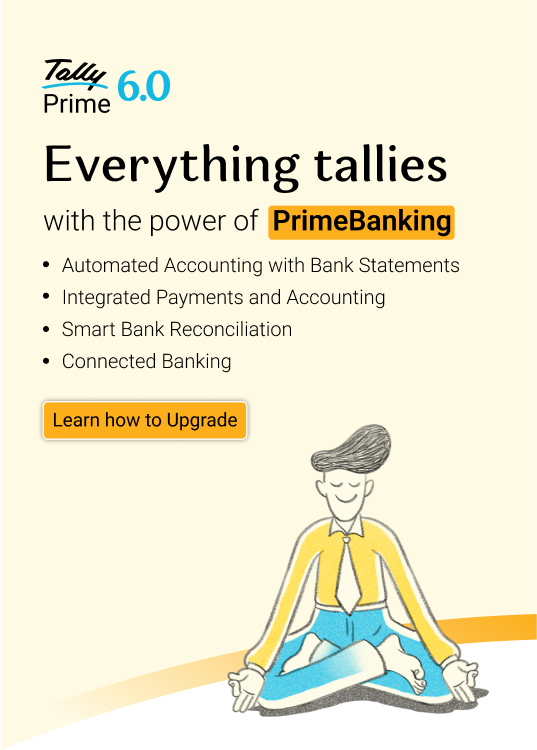At Tally, we co-build our products with our customers, shaping every feature around their insights. We believe that customer voices should be deeply woven in each development cycle of the product, thus by bringing customers into the development journey, we ensure that every feature is grounded in real needs, validated through real use cases, and impactful at scale.
This blog explores how we put VoC into practice, covering initiation, execution, analysis, prioritization, and the continuous cycle of improvement.
Initiation
- Feature owners request: VoC begins with a feature owner requesting a session, specifying what needs to be validated.
- Use case documentation: A structured document outlines key validation points and expected user interactions.
- Customer selection:
- Users who have requested the feature.
- Reference of customers who provide in-depth feedback.
- Recommendations from leadership, partners, and business teams.
- Pre-VOC preparation:
- Define a clear agenda and discussion script.
- Conduct enablement sessions and dry runs to align teams.
Execution
- Observation over explanation:
- Users should speak for the majority of the time while we listen and observe.
- Encourage users to think aloud while navigating the product.
- Being mindful of not turning VoC into a training session.
- Guided discovery:
- If users struggle, ask open-ended questions (“What do you think should happen next?”).
- Avoid immediate explanations, and let users explore independently.
- Key observations to note:
- Where users struggle, hesitate, or get frustrated.
- Repeated mistakes or unexpected detours.
- User questions that indicate unclear workflows.
- Session management:
- Being attentive to observe behavioural cues.
- Recording of sessions only with the consent of the customer.
Post-VoC analysis
- Feedback documentation:
- Organize feedback based on usability, functional, and technical aspects.
- Categorize feedback to prevent critical insights from getting lost.
- Review & action planning:
- Product Management and Engineering teams analyse and prioritize changes.
- Key takeaways are shared with leadership for decision-making.
- Closing the loop:
- Customers receive updates on how their feedback has been incorporated.
- If suggestions aren’t implemented, a credible response is provided.
- Follow-up sessions:
- Conduct post-release VoC to measure improvements and adoption.
Prioritising VoC feedback
We prioritize VoC by closely aligning it with business goals, product strategy, and user impact. Feedback that highlights recurring patterns, high-friction user journeys, or mission-critical gaps is given immediate attention. We ensure that inputs from diverse customer profiles—ranging from SMEs to partners and power users—are factored in, so we don’t just solve for the loudest voice but for the most meaningful ones.
At Tally prioritization is a cross-functional effort with a focus on impact, feasibility, and customer value.
We place a strong emphasis on qualitative feedback because it brings richness, depth, and clarity to our understanding of user experiences. Through in-person conversations, observations, and open-ended discussions, we uncover not just what users are doing—but why they're doing it. This helps us identify underlying motivations, behavioural cues, and pain points that aren’t always visible through data alone.
Balancing qualitative and quantitative feedback
That said, quantitative feedback also plays a vital role. It helps us validate patterns seen in qualitative inputs, assess the scale of a problem, and measure the impact of our decisions. Metrics from TallyCare, CIS and surveys help us understand adoption trends, performance gaps, and feature engagement.
We believe in a balanced approach, where qualitative inputs shape the ‘why’ and ‘how’, while quantitative data supports the ‘how much’ and ‘how often’. By combining both, we ensure our decisions are user-driven, evidence-backed, and scalable.
"Quantitative will take precedence in numbers, but qualitative will depict depth and nuances"
- Sowmya J
Group Product Manager
Challenges in capturing VoC
- Overwhelming volume – Managing a large influx of customer feedback can be challenging, and without a structured process, valuable feedback may be lost or overlooked.
- Influence of the vocal few – A small group of outspoken customers can disproportionately shape product decisions, potentially leading to a skewed understanding of broader customer sentiment.
- Unclear feedback – Vague or generalized responses often lack actionable insights, making it essential to ask precise questions that elicit meaningful feedback.
- Surface-level data – While quantitative feedback highlights trends, it often lacks context, making it necessary to gather qualitative insights to understand the reasons behind customer sentiment.
- Social bias – Customers may modify their responses to align with perceived expectations, leading to less accurate data and potential misinterpretations.
- Changing preferences – Customer needs and expectations evolve over time, requiring businesses to continuously update VoC data to ensure relevance.
- Limited resources – Capturing, analysing, and acting on customer feedback requires significant effort, making it crucial to prioritize high-impact insights.
- Bias in interpretation – Teams may unconsciously seek feedback that supports existing strategies, overlooking critical feedback that could drive real improvements.
Scope of improvement
- Access to accurate customer data: Ensure availability of reliable customer data along with clearly defined personas to guide meaningful engagements.
- Structured insight sharing: Establish a systematic process for sharing customer insights across teams—integrated with tools like Jira for traceability and collaboration.
- Openness to divergent feedback: Encourage teams to voice feedback that may challenge existing designs or assumptions, fostering a culture of continuous improvement.
- Continuous VoC process: Treat VoC as an ongoing initiative, with a focus on gathering deep, high-quality insights rather than rushing to meet deadlines.
- Preventing customer fatigue: Plan engagements thoughtfully to avoid overwhelming customers, maintaining trust and willingness to participate.
- Clarity on VoC vs Demo: Clearly communicate the purpose of VoC sessions, distinguishing them from product demonstrations to set the right expectations.
- Cross-functional insight capture: Build capabilities within teams to identify and interpret valuable feedback from outside their primary function or domain.
- Reducing bias & staying connected: Minimize cognitive bias by consistently engaging with customers and monitoring product-related metrics to stay attuned to real user needs.
At Tally, implementing VoC is more than just gathering feedback. It’s a deliberate, cross-functional effort to turn user insights into meaningful product impact.
By embedding customer voices across every stage, right from initiation to analysis and prioritization, we ensure our products are shaped by real needs and not assumptions, along with striking the right balance between qualitative depth and quantitative scale allows us to make informed and impactful decisions.
While challenges exist, our commitment to a structured, continuous, and inclusive VoC process ensures we stay connected to what truly matters: our customers.

















